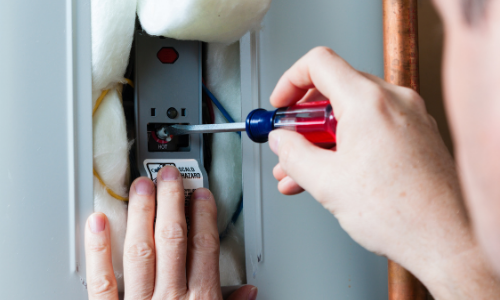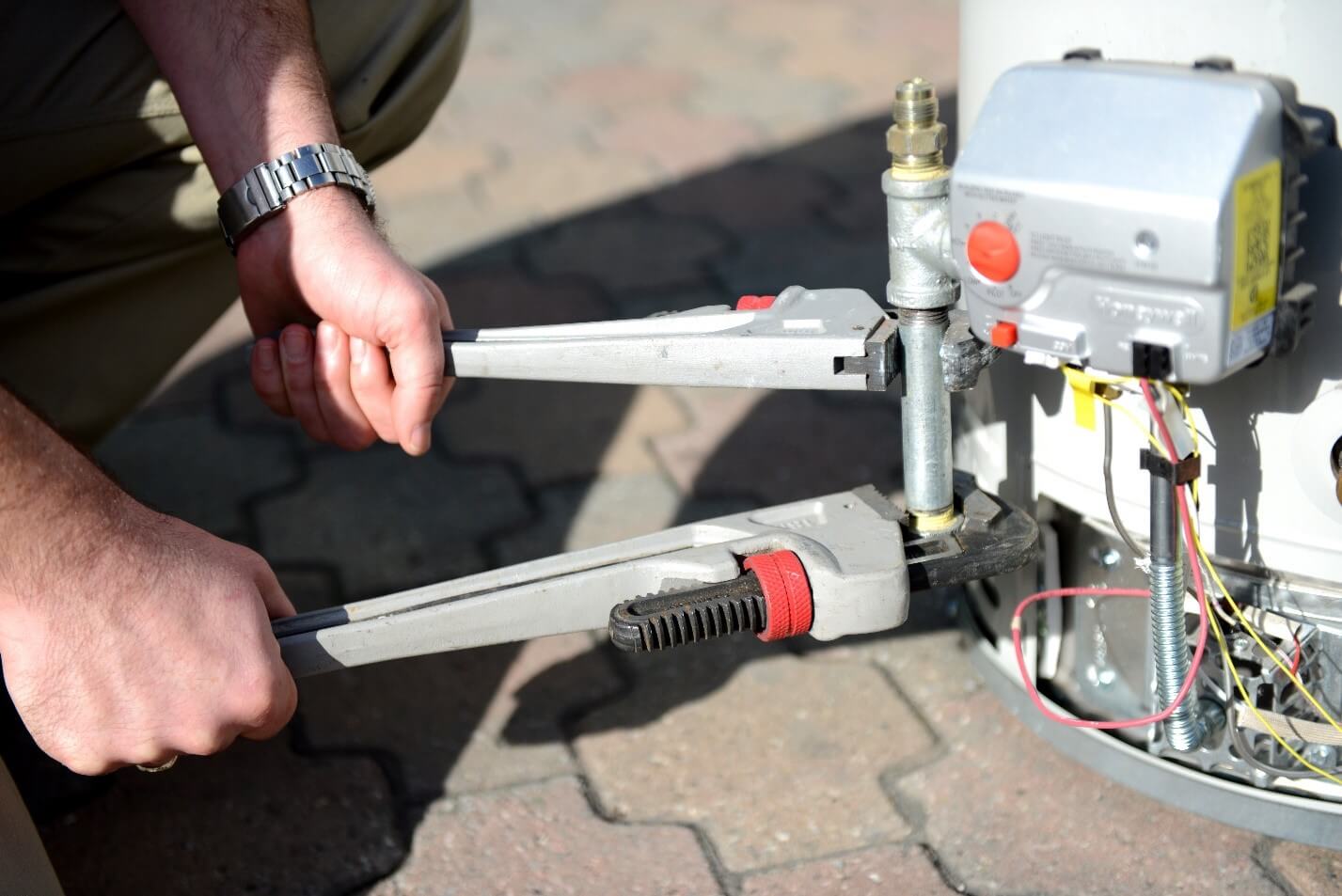We have discovered this post on Common Hot Water Heater Problems directly below on the net and decided it made perfect sense to relate it with you in this article.

A water heater is just one of the most vital fundamental appliances that can be found in a house. With hot water heater, you don't require to undergo the tension of heating water by hand every single time there is a requirement to take a bath, do the laundry, or the recipes. There is always an opportunity that your water heating unit would act up as with many mechanical devices.
It is important to keep in mind any little breakdown and tackle it promptly prior to points get out of hand. A lot of times, your hot water heater starts to malfunction when there is an accumulation of sediments as a result of continual use. As a preventative measure, routine flushing of your hot water heater is suggested to avoid debris accumulation and stop practical failure.
Typical hot water heater emergency situations and exactly how to handle them
Too little warm water
It might be that the water heater can't support the hot water need for your home. You can update your water heater to one with a larger capability.
Varying water temperature.
Your water heating system can start generating water of different temperature levels usually ice chilly or hot warm. There may be a need to change either the thermostat or the heating system of your water heating unit.
Dripping hot water heater storage tank.
A dripping container could be an indicator of corrosion. It could trigger damage to the floor, wall and also electrical tools around it. You might even go to danger of having your house swamped. In this circumstance, you need to shut off your hot water heater, permit it to cool down, and also thoroughly search for the resource of the trouble. Sometimes, all you need to do is to tighten up a few screws or pipeline connections in cases of minor leaks. If this does not function as well as the leak lingers, you could require to utilize the services of a specialist for a proper replacement.
Discolored or odiferous water
You need to understand if the issue is from the tank or the water resource when this happens. If there is no amusing odor when you run cold water, then you are specific that it is your hot water heater that is faulty. The odiferous water can be triggered by corrosion or the buildup of microorganisms or sediments in the water heater container. Once you notice this, you can try flushing out your storage tank or replacing the anode if the trouble persists. The feature of the anode is to clear out bacteria from your container. Since the anode pole substitute needs a comprehensive understanding of your water heating unit, you will certainly need the help of a professional.
Final thought
Some home owners overlook little caution and minor faults in their water heater device. This just leads to additional damages and also a possible total failure of your appliance. You must manage your water heater faults as soon as they come up to avoid even more expenditures as well as unneeded emergency difficulties.
With water heating units, you do not need to go with the anxiety of heating water manually every time there is a need to take a bathroom, do the washing, or the meals. It may be that the water heater can't support the warm water need for your apartment. Your water heating unit can begin generating water of various temperature levels typically ice scalding or chilly warm. If there is no amusing smell when you run cold water, after that you are particular that it is your water heating system that is damaged. The stinky water can be caused by corrosion or the buildup of bacteria or debris in the water heating system storage tank.
What’s Wrong With My Water Heater?
Not Enough Hot Water
You probably encounter this problem in the shower or while washing dishes. As you run your water, you’ll notice it starting to cool down. Turning up the hot faucet may not work, or it may only heat the water for a short period. Your hot water probably comes back and works normally one or two hours after you use it up.
If you’ve never had enough hot water, your heater may be too small for your home. If you haven’t had a problem until recently, there’s probably something’s wrong with your heater’s thermostat. Try adjusting it to see if you can feel a difference. Even if the thermostat’s working, the heating element itself could have burnt out. It’s also possible that a clog has restricted water flow into or out of the heater. Luckily, none of these problems are hard to fix, as long as you call them in early.
Water is Too Hot
Unregulated water heaters can make water dangerously hot. You probably have this problem if you’ve been scalded by your hot water. It’s also a likely culprit if you have trouble getting your faucets to produce a comfortable temperature. This problem is easy to fix, but it can also be a serious health hazard if you don’t address it. If you think your water is too hot, don’t doubt yourself; look into it!
Start by finding your heater’s thermostat and mark its position with a pen. Turn the thermostat to a cooler setting. Wait a couple hours to see if the problem is solved. If it isn’t, listen for boiling in the tank and look for water that comes out of the faucet steaming. In those cases, your temperature-pressure relief valve may be malfunctioning. This is a serious problem that can be dangerous, so you should have it looked at right away.
Discolored or Smelly Water
If all your water looks rusty or smells weird, there’s probably a problem with your pipes. If only your hot water looks weird, however, your water heater is probably at fault. Hot water discoloration comes in several varieties. It could look orange or brown-ish, taste rusty, or feel grainy. It could also look yellow or green-ish and taste gross or feel slimy. Either way, it’s a sign that there’s something wrong with your water heater’s tank.
Usually, hot water discoloration means sediment has built up in your tank. Sediment is made up of hardened minerals that accumulate on the inside of the water heater’s walls. When enough sediment builds up, it causes all kinds of problems–including your discolored water. Try flushing your water heater tank to clean out built up sediment. If the water still tastes rusty, your tank’s rust-preventing anode rod may have worn out. A pro can replace an anode rod easily, but without one, your tank could rust beyond repair relatively quickly.
Leaking
Water heaters can leak from several different places, and each leak means something different. If the leak is coming from a pipe above the heater, it’s possible the tank itself hasn’t been compromised. The cold inlet, hot outlet, and T&P pipes could all leak from above. Try tightening the problematic valve. If that doesn’t work, then the valve or pipe will have to be replaced.
If the leak is coming from the bottom of the tank, it’s important to determine exactly where it is. The leak could be coming out of the drain valve or your T&P valve below the tank. You can replace those valves and preserve the tank itself. If you notice the water tank itself leaking, however, that probably means it’s corroded beyond the point-of-no-return. Leaking water heaters are a big deal, so you should get yours replaced ASAP.
https://www.punctualplumberdallas.com/blog/whats-wrong-water-heater/

I came across that article on Warning Signs You Need Water Heater Repairs while surfing the internet. For those who liked our blog posting please remember to share it. Thanks a bunch for your time. Visit us again soon.
View More